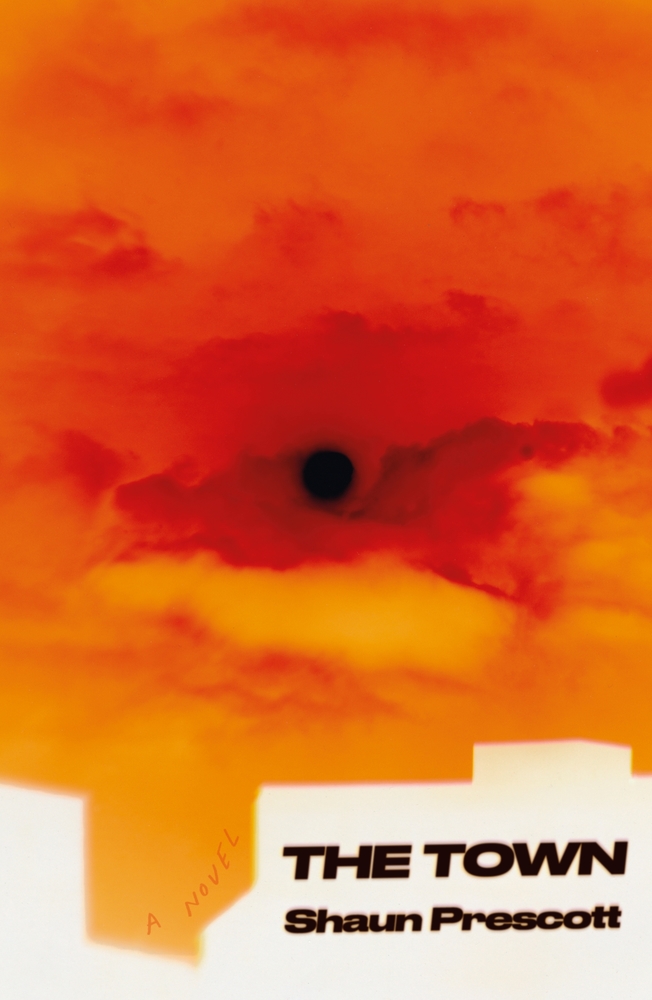The Town (249 pages; FSG), the first novel by Shaun Prescott, takes place in New South Wales, a region of Prescott’s native Australia that was once home to the Wiradjuri people. The United Kingdom’s colonial campaign in the region erupted into war by 1824, which led to famine among the Wiradjuri, as well as to the destruction of many of their sacred sites. With this legacy of erasure in place, The Town takes a look at life on the fringes of contemporary New South Wales as our unnamed narrator visits the titular town, an isolated smattering of petrol stations, fast food joints, and increasingly abandoned houses. There’s a bus that takes hours and hours to complete its circuitous route, a radio station with no listeners, and a pub that sits empty during the day. The narrator is there to write a book about what he calls the “disappearing towns” of the area, including the nearby town of Meranburn:
Mernaburn had not deteriorated economically, its residents had not flocked to the closest regional towns in search of work, the buildings had not been dismantled. Meranburn had simply disappeared.
The narrator slowly inserts himself into the lives of several of the townsfolk, including his new roommate Rob and his girlfriend Ciara, as well as the local pub owner and bus driver. He interviews these characters as research for the book, yet his presence in the town brings about little change in their lives—if only because change rarely visits the town:
In books and songs people gather and drink for reasons, and their lives bull-rush towards moments of importance. In these books and songs, meaninglessness is depicted too deliberately, and often hinted to have an origin or logic. The people in the town lived as if they would never die, but they were not heroic or foolish like in books and songs. They were only there. They seemed to understand better than anyone else that they were only there.
Change does come, however, when the town literally begins to disappear. Round holes that give off a mirror-like shimmer, like potholes of negative space, form in streets. These holes grow in size and number, until several unlucky citizens tumble into them, never to be seen again. This surreal touch is entirely in keeping with the off-kilter tone of The Town.
And while the town feels somewhat out of its time—both its residents and fixtures could have stepped out of Ted Kotcheff’s 1971 cult film of Outback horror, Wake in Fright—the novel’s town vs. city divide also speaks to our current era. Xenophobia and economic rage are two potent forces in the air right now and their influence is not by any stretch of the imagination confined to the United States. (It’s worth noting that the far-right terrorist behind the Christchurch massacre was an Australian who had professed support for two Australian far-right organizations.) Prescott presents a sharp contrast between the often resentful and boorish denizens of the towns and their mistrust of near by cities:
The town resembled a depressed country festival suspended in a 2 am low. Life had taken on a drowsy and aggressive sadness. It was possible to eavesdrop, but no one addressed any pertinent matter directly, instead focusing their conversations on the most general examples of the town’s decline. They seemed to explicitly avoid the topic of the holes as the cause of the decline, instead seizing on other, more rational phenomena: that the town was too big nowadays, or else that it was too small. That the town was too far away from elsewhere, or maybe too close. That it was the fault of Muslims, though there wasn’t even a mosque in the town, let alone an organised group of practicing Muslims. That kids play too many video games.
Also very 2020 and hovering over the novel is an apocalyptic foreboding; the narrator senses that all the great books and works have art have already been created, and yet these same works only speak to the past—they possess little to say about the here and now, or, whether due to civil warfare or ecological disaster, the disastrous future that waits just around the bend.
The divide between town and city grows more pronounced once the narrator and Ciara depart for the nearest metropolis in a section tellingly titled “The Disappointing City.” After an arduous trip on a long and dreary stretch of highway, the duo proves stymied by the city’s dismal job prospects, confusing city planning, and the dog-eat-dog mentality of its occupants. Ah, the fruits of neo-liberalism. Ciara becomes haunted by the notion that she has arrived in the city too late to take advantage of what it has to offer (a feeling familiar to many who have landed in San Francisco during the tech boom), and she soon takes up among the dispossessed living in the city’s underground labyrinth:
It wasn’t always like this, the city people told Ciara. The city was once authentically a city. Now it was only where business was conducted. She was doomed for arriving late, she said, laying flat on the dank mattress. She was too late for everything.
The Town is an impressive debut; perhaps most so for how Prescott maintains its singular and beguiling mood for the entirety of the novel—part comic satire, part existential horror. Prescott effectively conveys the sense that history and art seem incapable of reflecting the calamity of our present moment. There is only one question that continues to haunt both the narrator and the town’s residents, one that perhaps speaks to the Western world at large: is it that we are disappearing or are we, in the most meaningful sense of the word, already gone?

